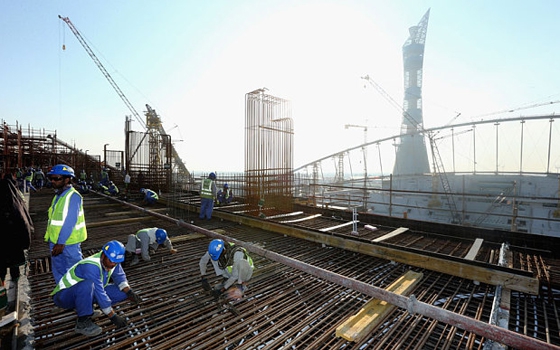Qatar has one of the busiest road markets in the GCC and plans to build 8,500 km of highways, 200 bridges and 30 tunnels over the next five years, according to Transport Minister Jassim bin Seif Ahmed Al Sulaiti.
The projects include Ashghal's Expressway Programme, which will connect the capital Doha to all the major cities and energy and industry centers.
A major project in this sector, the Bahrain-Qatar Causeway – commonly referred to as the Friendship Bridge – has been hit by a series of setbacks, including a redesign to include high-speed rail tracks, which has put a further damper on the project due to rising costs.
In the rail sector, Qatar Rail has started preparations to sign a slew of new contracts for the country's ambitious rail network and is likely to issue tenders shortly for facilities management of the Doha Metro and Lusail Tram, said a Peninsula report.
The metro network is being built over two phases and will include tour lines. The first phase, which will cover 80 km across Doha – of which 63 km is underground – is expected to be completed in the fourth quarter of 2019.
Qatar Rail said the work is progressing well on the first phase involving three lines – red, Green and Gold. More than 60 km of tunneling had already been completed out of the targeted 113 km powered by 21 tunnel. boring machines (TBMs). The entire tunneling work is targeted for completion this year, soon after which the MEP (mechanical, electrical and plumbing) contracts are expected to be awarded.
The Qatari company has set an ambitious target of completing 50 per cent of the project work over the year. A total of 37 stations are under construction and the project has a workforce of more than 27,000 on site. Meanwhile, the Lusail Tram network, which extends 38 km and includes 37 stations, is due for completion in 2020.
The tender for operation and maintenance of Doha Metro and Lusail Tram is due to be offered in the second quarter followed by another for maintenance and operation of the facilities associated with the long-distance rail, which will link all the GCC states.
By 2030, all the three net-works – Doha Metro, Lusail Tram and the long-distance rail – are expected to be completed and made part of a unified and integrated transport network covering different parts of Qatar.
Airport
The recently opened Hamad International Airport is expected to be expanded, with the terminal to be doubled in size by 2020.
Additionally, a new 45,0004q-m passenger amenity area – with features such as a museum, spa, children's play area, garden, library, gym, outdoor dining and lounges – is being planned for the northern part of the terminal.
The planned expansion will increase the size of the passenger terminal to more than one million sq m, nearly double the number of contact gates to 61 and bring the number of remote gates to 14.
The airport has been built on an area the size of Doha city, with half of this formed of reclaimed land.
Stadiums
Five years on from being awarded the right to host the world's most-watched sporting event, Qatar has initiated the construction work on six of at least eight venues that will be in used for the 2022 World Cup. The first of these host venues – the 40,000-seater Khalifa international Stadium – is targeted for completion this year.
Utilities
Investments worth $22 billion are expected to be made in Qatar’s power and water infrastructure up to 2020, according to Kahramaa. Projects include several new power stations and some 140 electricity substations. Key among such projects is the 2,400-MW Ras Laffan D, which is being developed as an independent water and power project (1WPP) and is expected to be operational in 2019.
Kahramaa is also building a power and water plant in Umm Al Houl, the first phase of which is scheduled to be completed next year. In line with the global drive towards sustainability, Qatar has set a target to produce 1,800 MW of solar energy by 2020. Towards this goal, the nation's first major solar power station in Duhail is scheduled to be operational in the next two years, producing 15 MW of energy. It is the first of a number of site which will meet Qatar's target.
Meanwhile, Kahramaa and Qatar Petroleum have recently set up a new solar power joint venture to build around 1,000 MW of solar power generating capacity to diversify Qatar 's energy mix away from hydrocarbons. In the water sector, the headlining project is the Mega Reservoirs project, which entails the construction of five potable water mega reservoirs sites and an inter-connecting network of large-diameter water pipelines. Every reservoirs site will ultimately comprise up to nine reservoirs, each of which will be the largest of their type in the world.
The first phase of the project, which is currently under implementation following the award of five packages last April, will deliver a storage capacity of about 2,300 million gallons of water in 24 huge concrete reservoirs and comprise some 480 km of buried ductile iron pipelines with diameter up to 1.6m.
The second stage, which will be implemented after 2020, will include construction of additional pipelines and 16 new reservoirs within the five mega sites to achieve an ultimate total storage capacity of about 3,800 million gallons of water.
Gulf Construction
2 April
























































